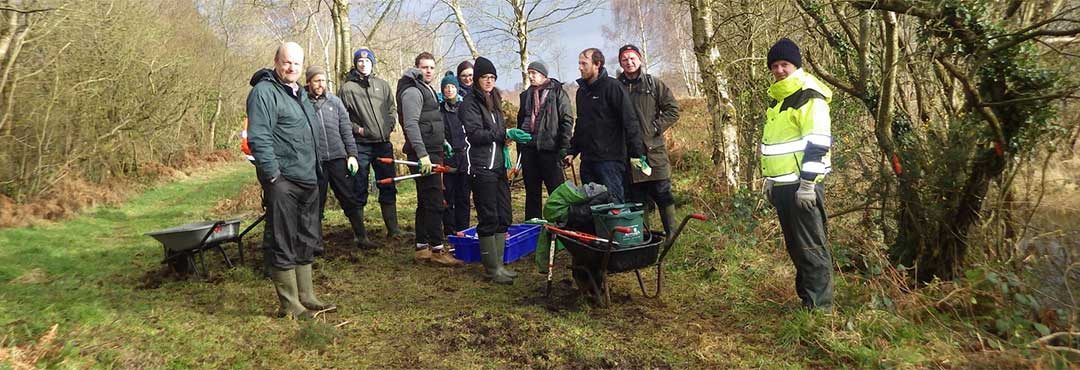Latin name: Lepus timidus hibernicus
Family: Leporidae
Description of the Irish Hare
Hares belong to the same family as rabbits. Their long back legs give them a distinctive ‘walk’ or lope and help them reach speeds of almost 50kph, making them Northern Ireland’s fastest land mammal. They can also jump to heights of around 2m.
The Irish hare (Lepus timidus hibernicus) is found only in Ireland and is arguably our oldest surviving mammal. It is a sub-species of the mountain hare which occurs in the rest of the UK. It is a native species with a russet brown coat, long ears with black tips and eyes set high in the head, which gives it a wide field of view for spotting predators.
Size
They are larger than rabbits reaching 43-60cm. Their tracks are easily distinguished from those of rabbits by their larger size (11-12cm long), although young hares (leverets) in their first few months may be mistaken for rabbits.
Historical Info
The Irish hare was once widespread and common throughout Ireland. Populations appear to have undergone a substantial decline in the last 15-25 years.
A survey carried out between 1994 to 1997 by Queen’s University, Belfast, examined the distribution of the Irish hare in Northern Ireland, as well as some aspects of the ecology of the species. The results indicated that the Irish hare is widely distributed especially in areas with semi-natural grassland, heath or bog, although at generally low densities (about 1 per square kilometre) and there was evidence of a reduction in both population and range.
The Irish Hare’s Habitat
Irish hares occur in a wide range of habitats including lowland raised bogs, blanket bog, grasslands and sand dunes. They also tend to occur on modified grassland habitats such as golf courses and airfields. They are most likely to be found in ‘unimproved’ areas of species-rich vegetation, and tall plants such as rushes. This provides not only food but also cover and shelter where they can lie up during the day, out of sight of predators.
Unlike rabbits, hares do not live in burrows but in a “form” – a patch of flattened vegetation often with round fibrous droppings (10-15mm in size). Living permanently above ground leaves them vulnerable to environmental disturbance or change.
Diet
They feed mainly on a variety of grasses but sedges, heather, wild thyme, bilberry and even the shoots of young trees may play an important part in their diet, depending on the habitat.
Threats to the Irish Hare
Threats to this species are generally poorly understood, but the following factors are thought to have a negative effect on hare populations:
- Loss of refuge areas for daytime lie-up sites, particularly rushes and good quality hedgerows
- Habitat change and changes in farming practice, such as conversion of species-rich grassland to ryegrass (Lolium spp.) and clover mixes, the switch from spring to winter cereals and the change from hay to silage making
- Habitat fragmentation
- Increased levels of disturbance due mainly to high livestock stocking densities on farms, increased use of farm machinery, peat cutting machines and disturbance by cats and dogs
- Increased mortality resulting from highly efficient mechanised harvesting of agricultural crops
- Increased levels of predation on leverets by foxes, crows and magpies
- Illegal taking of hares
- Direct grazing competition with sheep in upland areas

